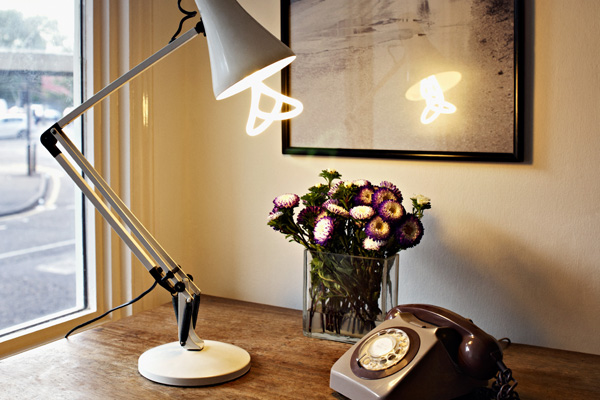If you’re having trouble with CFLs, you’re not alone by a long shot. We chatted with an expert about the issues, how you can use CFLs successfully, and your alternatives.
If there’s one topic that has people talking, it’s CFL lighting. Here are just a few of the comments HouseLogic has received about CFL longevity or the lack thereof:
“… I find myself having to by [sic] those CFLs which cost more and only last three or four months. Additionally, they don’t create much light, which, given the quality of the light, is probably not all bad.”
“It is incredibly frustrating to read myths about how long-lasting CFLs are. They simply are not. I’m lucky to get more than three or four months out of one. You might think it’s great to have them for the energy savings, but at least tell the truth about their complete lack of durability.”
“… We live in the mountains, and our electricity goes on and off frequently due to high winds and damage to the power lines. This apparently decreases the life of CFLs … In my case, a CFL [lasts] no longer than a regular bulb, and the cost is at least 10 times more than a regular bulb.”
Based on your comments and some of my own puzzling issues with CFLs, HouseLogic asked me to explore why the bulbs haven’t lived up to many of our expectations — now that federal requirements for lightbulb efficiency have begun to phase in.
Our bathroom CFLs just kept blowing out
When my husband and I moved into our new home four years ago, we decided to replace all our incandescent bulbs with CFLs to be green and save on energy. We had a decidedly mixed experience with the quality and color of light — and the shades of meaning apparently implied by the label claim “instant on.” (Some CFLs take time to hit full light strength.) For instance, our hallway lights warmed up so slowly we went back to regular bulbs.
But the most frustrating location for CFLs was in our two bathrooms, where they hung upside-down in wall-mounted bell-shaped enclosures over each sink. A couple of bulbs actually blew out in a single day. Others lasted weeks; others months — but not the touted 10,000 hours by a long shot.
We checked the wiring and the fixtures but found nothing wrong. Our electrician sold us expensive, “high-quality” CFLs he liked (we weren’t familiar with the brand); the light was cold and unpleasant, but the bulbs did last 11 whole months. Then, within a span of two days, they all blinked out one by one, like chorus girls bowing at the end of a show.
CFLs can cost between $1.25 to $10 per bulb.
5 factors that shorten CFL lifespan
I consulted Russ Leslie, associate director of the Lighting Research Center in Troy, N.Y., who has tested bulbs for Energy Star. “If you just blow a single CFL bulb by itself, you probably just have a bad bulb,” Leslie says. “But when a CFL repeatedly burns out in the same fixture, there’s an issue.”
Leslie says several things can shorten a CFL’s lifespan considerably:
1. Rapid switching. This, I believe, is my problem — and also that of the reader who lives in the mountains. Apparently, projected CFL lifespans are based on a three-hour run time per start. In
other words, during CFL testing, bulbs are cycled on for three hours and off for 20 minutes until half the samples have failed. If you turn them on frequently for less than three hours at a time — as I do in my bathroom — you’re in for a surprise.
“Incandescents are somewhat immune to the number of times you switch them on and off,” Leslie says, “but the electrodes inside a CFL are stressed with each burst of starting voltage, and will eventually degrade and fail. With a CFL, the number of starts is the primary factor for determining how long it will last; the number of burning hours is secondary. A CFL rated at 10,000 hours in the three-hour-on standard test might last only 4,000 hours if left on for only 15 minutes per start.”
OK, 500 for me, but who’s counting?
That’s why you shouldn’t use CFLs in motion-sensor lighting, by the way.
2. Heat and humidity. Heat and humidity can also reduce CFL life, and my bathroom has both. Although the glass bells of my fixtures are open at the bottom, heat still builds up inside each one. “CFLs like things cool,” Leslie says.
3. Dimmable or recessed lighting. Not applicable to my situation, but Leslie says that you must buy CFLs explicitly designed for those purposes (it’ll say so on the package).
4. Vibration. LRC hasn’t tested for this attribute, but the FAQs at GE’s website say that CFLs in fixtures that vibrate — such as ceiling fans and garage door openers — won’t perform well.
5. Variation in quality among manufacturers. “Consumer Reports” testing shows significant performance difference from brand to brand and for different applications (particularly for rapid switching, where a number of spiral-type bulbs received middling or poor ratings).
I also asked whether it mattered that the bulb was inverted (screwed into the fixture with the base up). Leslie said that LRC tested that attribute and found no significant difference in bulb performance.
“Overall, an Energy Star-rated CFL should perform well for you,” Leslie says, “if you choose an application it’s suited for. The technology has improved greatly in recent years, especially after Energy Star started verifying its performance standards.
“But if you aren’t having luck with a CFL in a certain fixture,” he says, “consider using a halogen incandescent on a timer or upgrading to LED lighting, which is rapidly improving.”
Read more: http://www.houselogic.com/blog/lighting/cfls-light-bulbs/#ixzz1kmGV9qxc


No comments:
Post a Comment